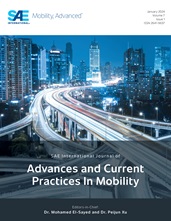Cellular solids are excellent energy absorbers and widely applied in the automotive passive safety area. Their microstructures offer the ability to undergo large plastic deformation at nearly constant nominal stress and thus can absorb a large amount of kinetic energy before collapsing to a more stable configuration or fracture. To further improve their performance, it is imperative to develop a systematic design method, to tailor microstructures’ behavior by adjusting their geometric parameters, especially for those with irregular, random shapes.
In this research, we proposed a machine learning based method, which combines the finite element (FE) analysis to design open cell foams for crash energy absorption. The foam geometry is generated utilizing a large number of core points and convex polygons, known as the Voronoi diagram, and then converted to the FE model to compute the plateau stress under crush loading. Based on the simulation dataset, principal component analysis (PCA) is performed to significantly reduce the dimension of design variables. Then, the relationship between the structural response and reduced design variables are established using a linear regression function. The results of the case study demonstrate that the proposed method can effectively and efficiently design the cellular energy absorbers with stochastic, truss-type microstructures at a relatively low computational cost.
